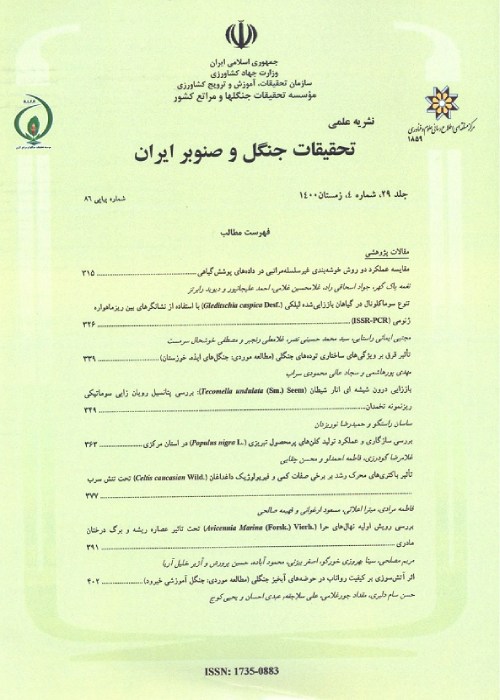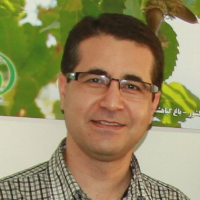Effect of protection on structural characteristics of forest stands (Case study: Izeh forests, Khuzestan)
The structure of Zagros forests in Iran is changing drastically due to human interventions and environmental factors. Only small parts of these forests, such as protected and inaccessible areas that are somewhat immune to human intervention, have the main structure of these forests and can be used as a model for the management of other Zagros forest stands. The aim of this study was to compare the structural characteristics of a protected stand with a history of 15 years of protection (Golzar) with a natural stand (Kohshour) in a part of the forests of Izeh city, Khuzestan province of Iran. In each area, a one-hectare square-shaped sample plot was implemented and the structural variables of all woody species were measured. Due to the non-normality of the data, Mann–Whitney U non-parametric test was used for statistical comparison. According to the results, in Kohshour stand, there were 273 woody species per hectare from three species of Quercus brantii Lindl., Acer monspessulanum L. and Crataegus aronica Bosc., but in the protected stand, 225 woody species per hectare were measured. In addition to the above three species, there were also two shrub species of Amygdalus orientalis Mill. (with significant frequency) and Pistacia khinjuk Stocks in protected stand. In Golzar, the ratio of coppice and seed-origin woody species was almost equal, but in Kohshour, 83.5% of the trees were coppice. Although in general, the mean of quantitative variables in natural stand was higher than protected stand, but the comparison of quantitative variables by species and origin between the two stands showed that in most cases the mean of the variables in Golzar stand was significantly higher than natural Kohshour stand. There was only no significant difference between the height of shoot-origin A. monspessulanum trees between the protected stand and natural stand. The results of this study showed that protection can have positive effects on the structural elements of the stands, especially species diversity, the remaining of shrub layer in the lower part of the forest and the improvement of diameter distribution. Therefore, it can be recommended to increase the protected areas in the Zagros forests.
Density , diameter distribution , Golzar , Kohshour , Oak , shrub layer
- حق عضویت دریافتی صرف حمایت از نشریات عضو و نگهداری، تکمیل و توسعه مگیران میشود.
- پرداخت حق اشتراک و دانلود مقالات اجازه بازنشر آن در سایر رسانههای چاپی و دیجیتال را به کاربر نمیدهد.



